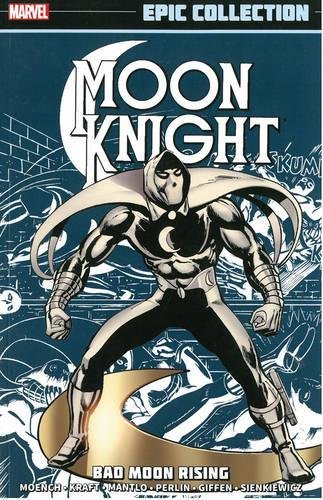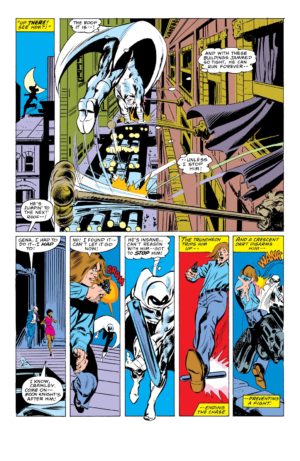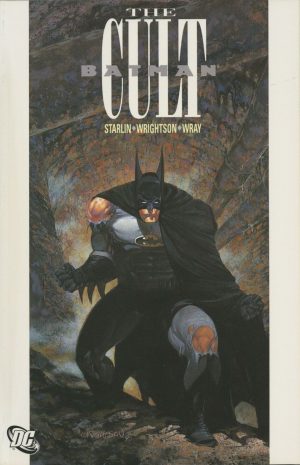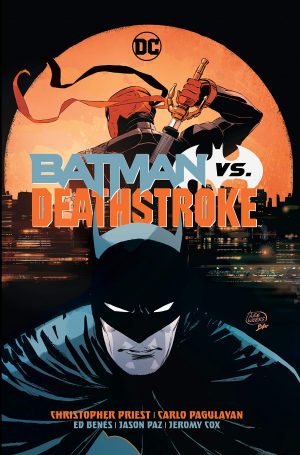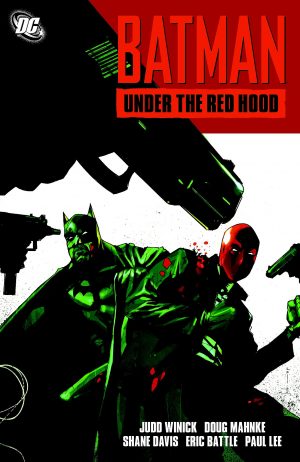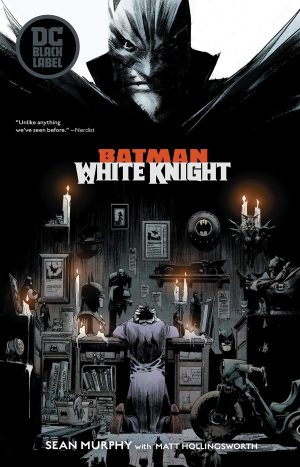Review by Karl Verhoven
The issue about Moon Knight has always been the Batman comparison. There’s little doubt it’s what Doug Moench intended when he created the character to pit against Werewolf by Night, only intending him as a one-off, but as there’s barely a character at the two major superhero companies without some near equivalent at the other, does it really matter? What’s more important, the character or the story they appear in?
Moon Knight’s earliest appearances are collected here chronologically, poor stories to begin with, neither writers nor artists making much of him, although Don Perlin deserves some credit. His panel art may have been plodding, but his design for Moon Knight has survived decades with very little alteration. A Defenders story achieves a certain pathos, but that’s little to do with Moon Knight, and it’s never explained how he escapes a death trap. The best art over the first half of this collection is a toss up between then old master Gene Colan, or then newcomer Mike Zeck, Colan treating the character as atmospheric gothic horror and Zeck as a powerful superhero. Both approaches work, but Moon Knight came to be defined by Bill Sienkiewicz whose art starts in thrall to Neal Adams before going on an amazing trip. All comment about the similarity to Adams at the time missed the point. Many artists tried to imitate Adams and couldn’t pull it off, but here was a newcomer managing that style with confidence. Seeing his development over the second half of Bad Moon Rising remains a thrilling journey all these years later, and it continues in Shadows of the Moon.
That Moon Knight became something more than an ersatz Batman was thanks to being allocated the back-up strip in a Hulk magazine aimed at viewers of the late 1970s TV show. Moench developed a TV action drama flavour to the stories, giving Moon Knight the gimmick of three separate civilian identities with their own distinctive voices. As far as we can tell, he’s really former mercenary Marc Spector, whose combat skills were amplified after being bitten by the werewolf in his début, but he’s also millionaire playboy Steven Grant and salt of the Earth cab driver Jake Lockley. Why? Well obviously because it’s a neat idea, but Moon Knight describes it as “Every identity has its place and every identity in its place”, which just about works. Starting with former mercenary colleague Frenchie and girlfriend Marlene, he develops a crew of assistants he can trust, the most distinctive of them being the homeless alcoholic Crawley, who receives some tragic fleshing out near the end. Starting with a horrific tale of a hatchet killer, Moench delivers a series of dark crime stories. There are masks and disguises, but humans behind them, and this mood separates Moon Knight from the earlier character who’d cheerfully teamed up with Spider-Man.
The really compelling Moon Knight stories by Moench and Sinekiewicz are beyond this content, but from halfway more than enough artistic quality accompanies neatly constructed crime plots to makes Bad Moon Rising still worth a look, while in places it’s much better. Alternatively, in 2021 Marvel released a hardcover Omnibus edition featuring all this material and some from Shadows of the Moon.
